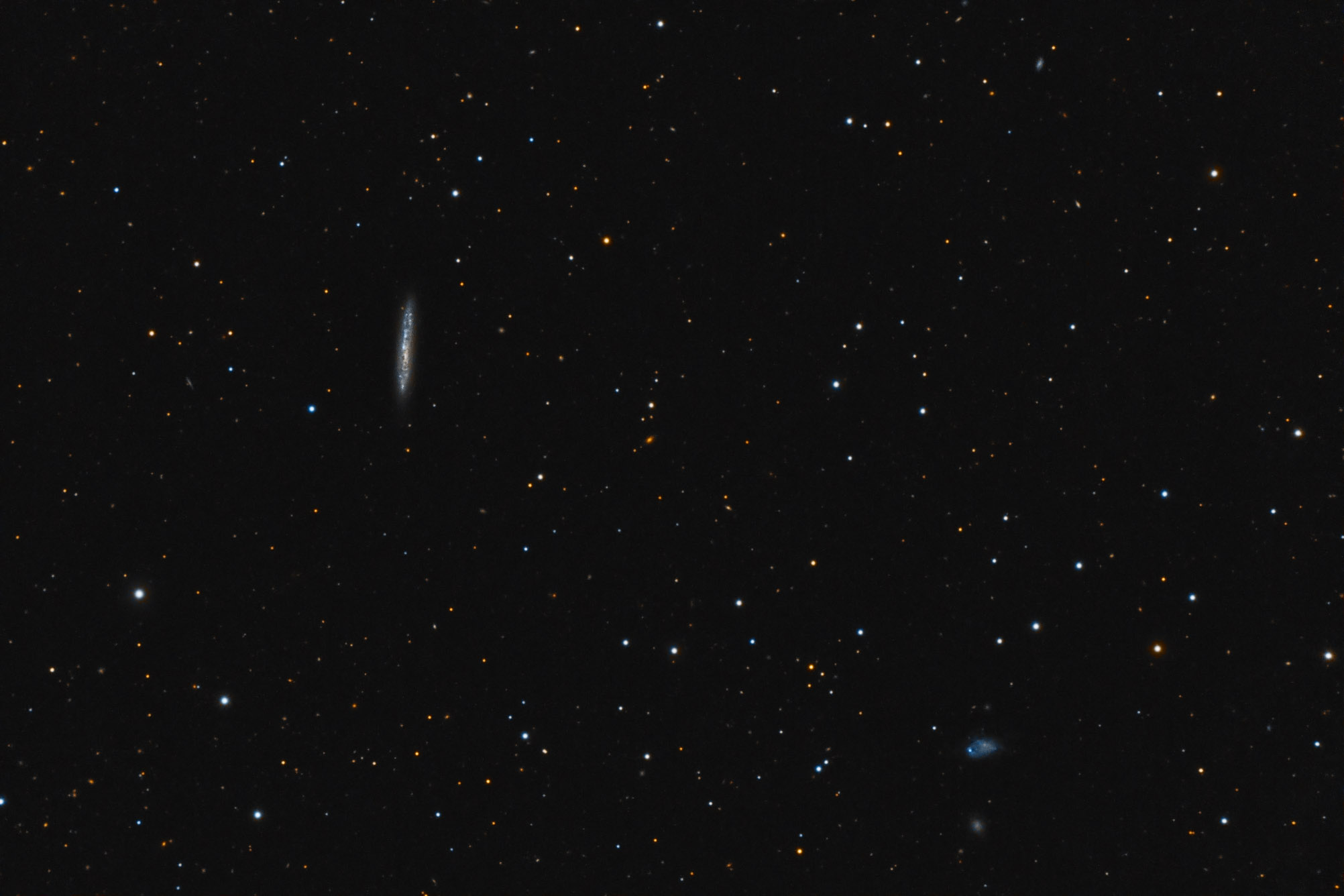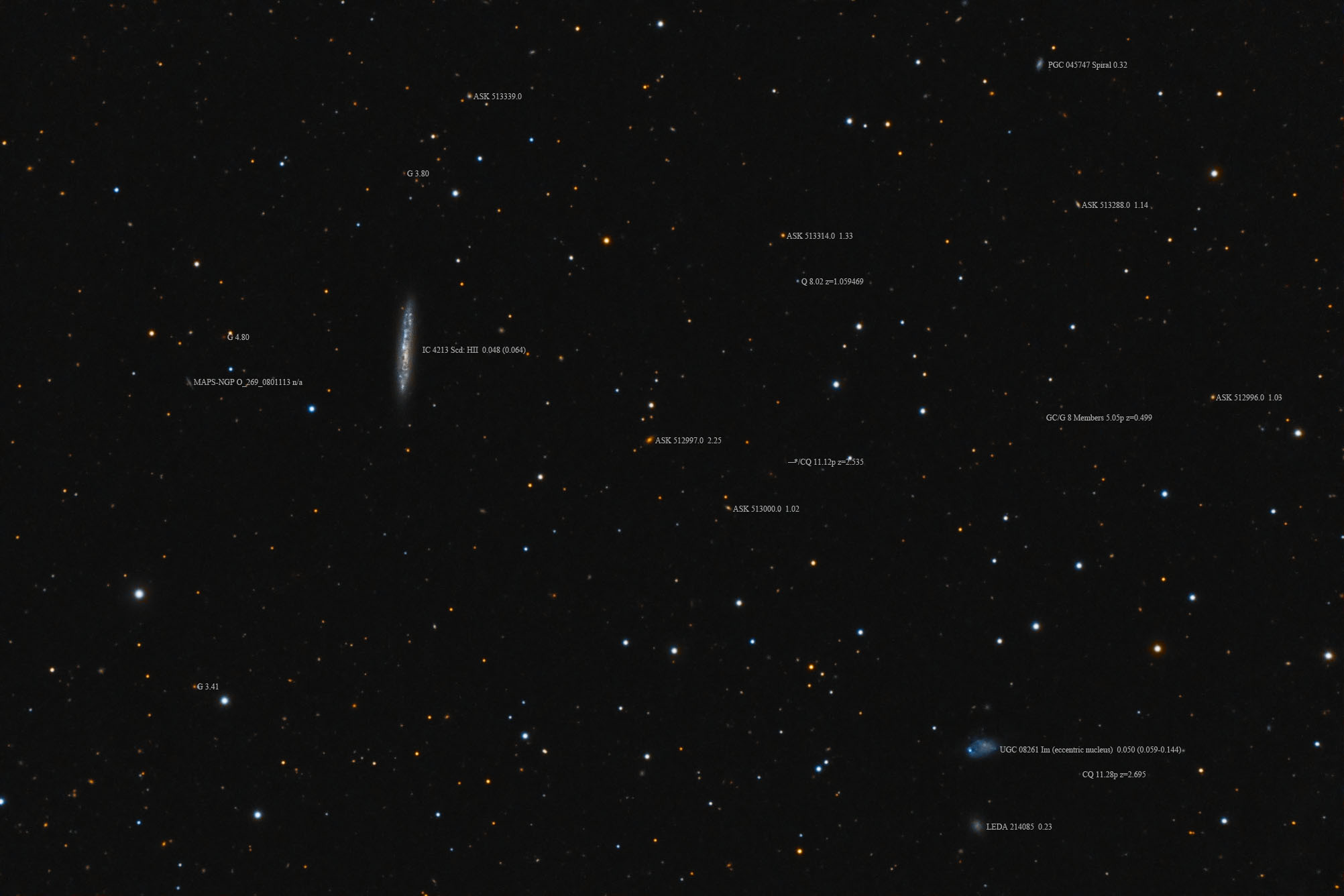| Description | Images |
Object name: IC4213Designation(s): IC4213, IC 4213 is a rather odd edge-on spiral in Canes Venatici in which no dust lane is seen. Even a core is rather missing consisting of just an area below center a bit redder than the rest of the galaxy. I make out no hint of spiral structure, just dark dust clouds and bright star clouds. It is listed by NED as a Scd: galaxy with HII emission. Its redshift distance is about 48 million light-years which means it should be within range of my H alpha filter. I should have tried it. Non-redshift measurements put it more like 64 million light-years distant. At such close range, redshift can be quite misleading. So I used the larger distance to estimate its size at 56,000 light-years. A rather typical size for a spiral. I wonder if seen face on it would be a rather flocculent galaxy. Even those usually have a dust lane which seems very absent in this galaxy. I did push the contrast a bit more than normal as it was very bland with my usual processing. Just a minor tweak and suddenly the contrast jumped far more than I expected. So I blended it back down to 50% and may have overdone it even then compared to what few images of it I can find on the net. The galaxy was discovered by Stephane Javelle on June 15, 1903. How did it escape galaxy hunters for so many years? It is magnitude 13.3 so not all that faint. Even Herschel should have picked it up. Related Designation(s):2MASS J13121120+3540122, 2MASX J13121121+3540107, 2MASXi J1312112+354016, 2MFGC 10524, CG 1104, CGCG 1309.8+3556, CGCG 189-039, IC 4213, IC4213, IRAS F13099+3555, LGG 334:[G93] 008, MCG +06-29-057, NFGS 134, NGP9 F269-0800472, PGC 045848, UGC 08280, USGC U518 NED04, UZC J131211.2+354014, [M98j] 191 NED03, |


